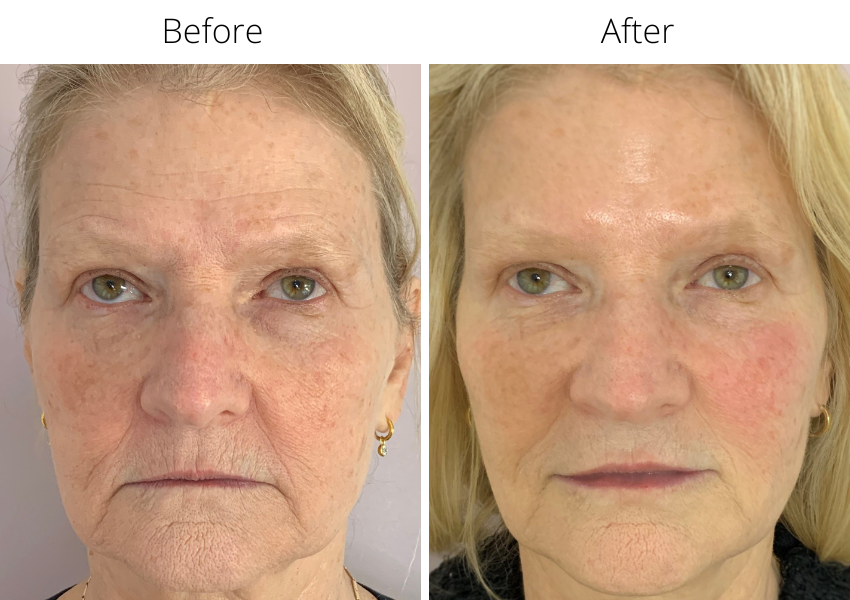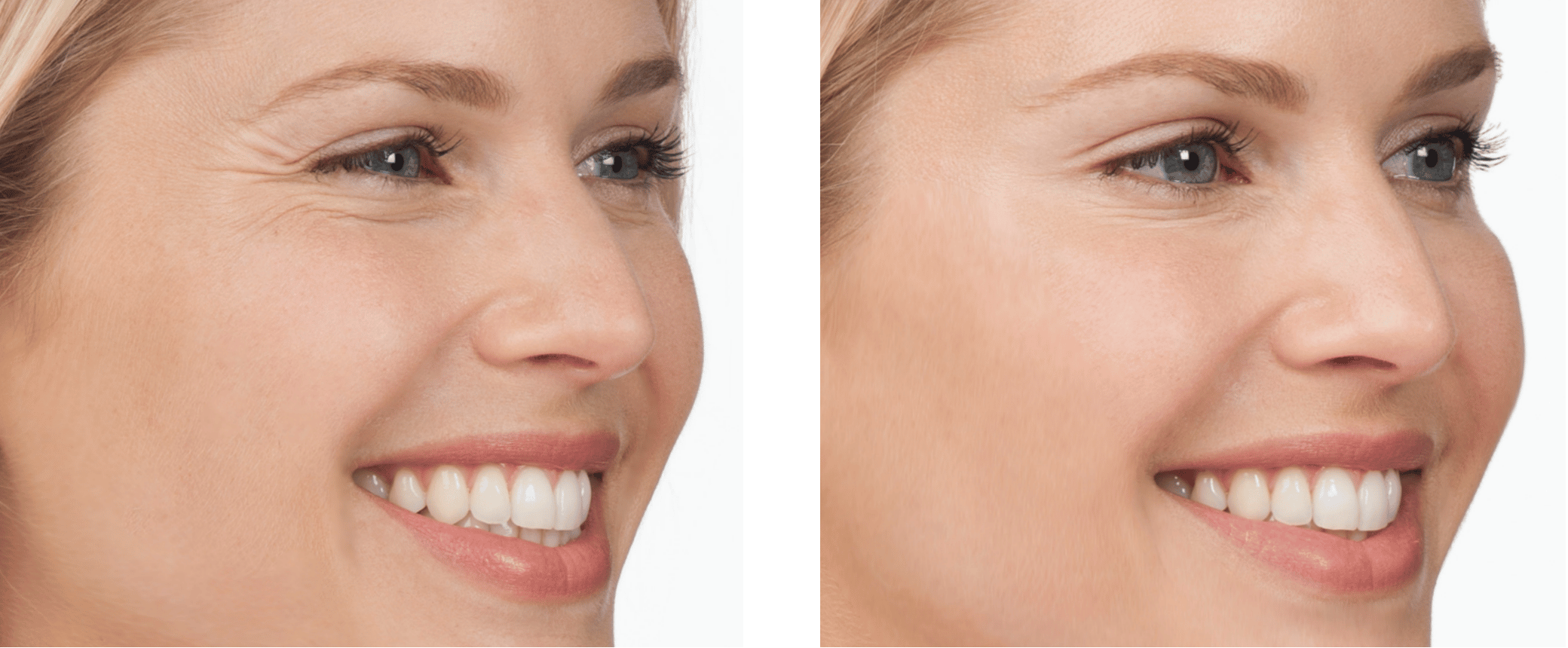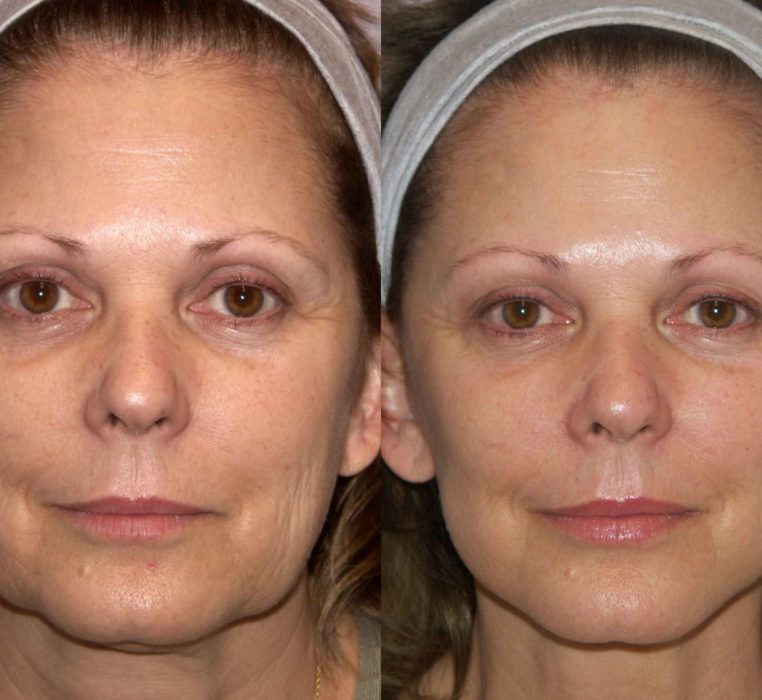Botox injections are one of the most popular non-surgical cosmetic treatments worldwide. Data on Statista shows over 9.2 million Botox procedures were performed globally and a third of the procedures were in the United States alone.
Botox’s popularity has been on an exponential uptrend since 2002 when the FDA approved it as a temporary cosmetic treatment for frown lines in adults. The popularity is because of the transformative power of Botox.
The FDA also instructed that it should be marketed as BOTOX® Cosmetic to differentiate it from cosmetics for medicinal uses.
Results: Botox Before and After
Timeline for Results
Botox changes follow the following pattern but Botox results timeline depends on the person receiving treatment:
Days 1-3:
- Minor swelling, redness, or bruising around injection sites.
- No visible changes yet.
Days 4-7:
- Swelling and redness subsides.
- Post-treatment results become more noticeable.
- Reduction in the appearance of wrinkles.
- Wrinkles and lines start to smooth out slightly.
Days 10-14:
- Reduction in fine lines and wrinkles become visible.
Photographic Evidence
Before and after photos show a visual result of how Botox can change areas of the face such as the lower face and glabellar. Many providers share Botox before and after photos on their websites showcasing patient transformations.
Forehead lines

Before: There are horizontal lines across the forehead.
After: The forehead appears smooth, lifted, and line-free.
Frown lines

Before: Vertical creases between the eyebrows that are visible even when not frowning.
After: The forehead and brow area become smooth as well as frown lines become significantly softened.
Crow’s feet

Before: Crinkly lines radiate from the outer eye area.
After: The eye region now appears smoother.
Lower Face

Before: There is banding or laxity in the neck. The jowls and chin appear loose.
After: The neck and chin now appear more taut, toned, and lifted.
Longevity of Results
Factors that affect the longevity of results include:
- Metabolism
- Frequency of treatments
- Area(s) treated
Metabolism
The rate at which your body metabolizes Botox can affect how long the results last. People with faster metabolisms tend to break down the Botox neurotoxin faster which causes shorter-lasting results.
Younger patients and highly active people such as athletes often have faster metabolisms.
Frequency of treatments
First-time Botox users see results lasting around three months. The treated muscles can become trained to relax with continued Botox treatments which may extend the duration of the results up to six months.
Area(s) treated
Muscles in the forehead area are less active therefore results can last up to six months. Botox performed around the eyes (crow’s feet) may last closer to the three-month mark because of the frequent muscle movements. Glabellar lines (Between the eyebrows) last around four months. Botox on the lips wears off within two to three months because of the movement in this area.
Potential Side Effects and Risks
Common Side Effects
- Redness
This redness at the injection site occurs when the needle penetrates the skin. The penetration causes a minor inflammatory response, a natural reaction of the skin to the injection process.
The redness lessens within a few hours to a day and does not indicate any complications.
- Mild swelling at the injection site
This swelling is due to the body’s response to the injection and the fluid injected into the tissue and it usually resolves within a few hours to a couple of days.
The patient should apply a cold compress to the treated area to reduce swelling faster.
- Bruising
Bruising happens if the needle damages a small blood vessel during the injection process causing a small amount of blood to leak into the surrounding tissue but it resolves within a week.
Patients should avoid blood-thinning medications and supplements for a few days before and after the procedure to reduce the risk of bruising.
Serious Risks
The majority of Botox side effects are minor and transient, typically resolving within a few days of treatment. Serious risks are uncommon but can occur when Botox is not performed by a qualified practitioner.
Serious risks include:
- Muscle weakness
- Allergic reactions
- Botulism-like symptoms
Muscle weakness
Muscle weakness can occur when Botox spreads beyond the targeted injection site. This condition is temporary and usually resolves as the Botox wears off. The patient should avoid massaging the treated area immediately after the injection.
Allergic reactions
Some patients may experience itching, rash, hives, swelling at the injection site, or more severe reactions like shortness of breath. Patients should inform their providers of known allergies or previous reactions to similar products during their initial consultations.
Botulism-like symptoms
Botulism is a rare syndrome caused by botulinum neurotoxin (BoNT). In very rare cases, patients might develop botulism-like symptoms after Botox treatment spreads beyond the injection site and affects the nervous system.
Botulism symptoms are difficulty swallowing, speaking, or breathing, muscle weakness throughout the body, and vision problems. Clients should ensure the procedure is performed by a qualified practitioner.
Choosing the Right Provider
As seen above, you should ensure the Botox procedure is performed by a qualified practitioner if you want to avoid serious risks.
The following are the main factors to consider when choosing a Botox provider:
- Board certification
- Experience
- Patient reviews and referrals
- Consultation process
- Hygiene and safety standards
- Ensure the provider is certified by a recognized board in dermatology or plastic surgery. Check their certification through the American Society of Plastic Surgeons (ASPS) and the American Academy of Dermatology (AAD) and verify their license to practice medicine in the state of Pennsylvania on the websites of the Pennsylvania Medical Society or the Pennsylvania Department of State.
- Look for a provider with extensive experience in administering Botox injections because they have refined their techniques and understand the nuances of facial anatomy.
- Positive reviews and recommendations from previous patients can indicate quality. Review online testimonials on Google, Healthgrades, Zocdoc, and RealSelf to understand the communication style of the specialist, their technical skills, and other patients’ experiences.
- Qualified Botox providers will take time to understand your needs, answer your questions, and create a personalized treatment plan.
- The Botox provider should follow proper sterilization protocols.
Conclusion
In summary, Botox injections are one of the most popular non-surgical cosmetic treatments worldwide. Data on Statista shows over 9.2 million Botox procedures were performed globally and a third of the procedures were in the United States alone.
The following are key benefits of Botox treatments:
- Reduction in fine lines and wrinkles
- Botox is a non-surgical treatment with minimal downtime.
- The temporary nature of Botox allows patients to decide if they want to continue with treatments.
Positive effects become visible within 2 weeks of treatment and last 3-4 months on average before wearing off gradually.
The best Botox outcomes involve licensed, credentialed injectors using the proper technique therefore you should consult an experienced provider to ensure the results look natural and get minimal side effects and no serious risks.

